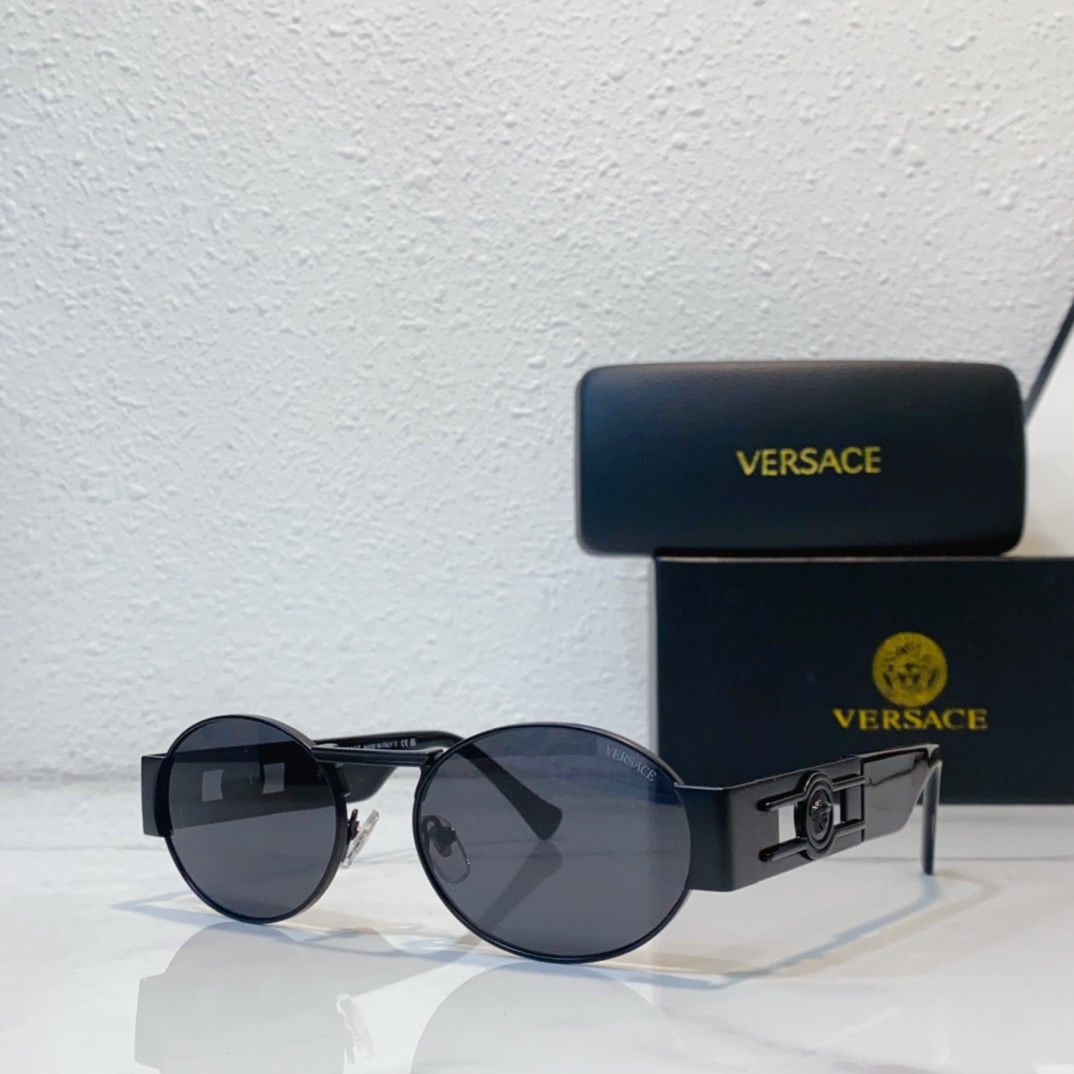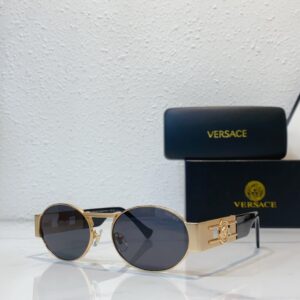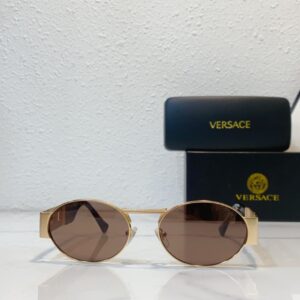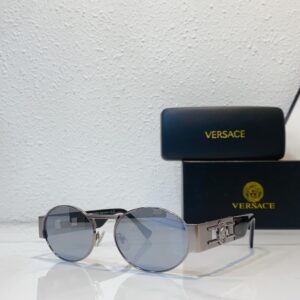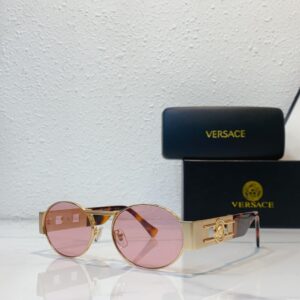Introduction to Designer Sunglasses
Designer sunglasses have become a staple of modern fashion, influencing not just personal style but also broader trends within the industry. Their popularity can be attributed to various factors, including superior craftsmanship, distinctive aesthetics, and the allure of prestige associated with top-tier brands. Consumers often gravitate towards these luxury items for their quality materials, innovative designs, and the status symbol they represent. Owning a pair of authentic designer sunglasses can enhance individual style while simultaneously signifying an appreciation for luxury fashion.
As the demand for designer eyewear has surged, so too has the emergence of replicas and counterfeits. These imitations flood the market, often designed to mimic the look and feel of authentic designer products. While replicas may attempt to replicate the style of popular brands, counterfeit sunglasses seek to deceive consumers by falsely representing themselves as genuine items. This proliferation of fake designer sunglasses poses significant challenges for consumers seeking to make informed purchasing decisions.
It is essential for buyers to differentiate between authentic products, replicas, and counterfeit sunglasses. Understanding the nuances of these categories not only protects consumers from financial loss but also promotes a deeper appreciation for genuine craftsmanship. Furthermore, being aware of the implications of purchasing counterfeit items is crucial, as it can affect local economies and undermine legitimate businesses. By recognizing the signs of authenticity and the risks associated with replicas and counterfeits, consumers can confidently navigate the vibrant landscape of designer sunglasses, making educated choices that reflect their style without compromising on quality or integrity.
Understanding Counterfeits vs. Replicas
In the realm of designer sunglasses, distinguishing between counterfeits and replicas is crucial for informed purchasing decisions. Counterfeits are illegal imitations of branded products, designed to deceive consumers into believing they are purchasing genuine items. These products misrepresent themselves to exploit the reputation and distinctiveness of established brands, often leading to legal repercussions for manufacturers and sellers. Counterfeit designer sunglasses typically bear authentic logos and branding, which mislead buyers regarding their authenticity. These imitations can infringe on intellectual property rights, and purchasing them may inadvertently support illegal activities associated with counterfeit production.
On the other hand, replicas are products that closely resemble original designer items but do not attempt to pass themselves off as authentic. Unlike counterfeits, replicas often lack proper branding and may be intentionally labeled as such, allowing consumers to understand that they are not acquiring genuine products. While replicas may replicate the style of designer sunglasses, they do so without infringing on trademarks or copyrights in a deceptive manner. The motivations behind the creation of replicas often stem from the desire to provide consumers with stylish alternatives at a more accessible price point.
The distinction between counterfeits and replicas extends to consumer choices as well. Buyers attracted to counterfeits may be motivated by price or brand prestige, unaware of the ethical and legal implications involved in their purchase. Conversely, consumers interested in replicas might prioritize aesthetic appeal and affordability while remaining cognizant of the lack of brand authenticity. Understanding these differences not only aids in making educated decisions but also promotes a greater appreciation for genuine craftsmanship and quality, ultimately elevating the purchasing experience in the world of designer sunglasses.
Key Indicators of Fake Designer Sunglasses
Identifying fake designer sunglasses requires a careful examination of several key indicators. Understanding these specific characteristics can help consumers determine whether they are purchasing a genuine product or a replica. One of the first aspects to assess is the logo precision. Authentic designer brands usually have meticulously crafted logos, which exhibit clarity and sharpness. In contrast, replicas often feature poorly aligned or misshapen logos that may lack attention to detail.
Another important indicator is the materials used in the construction of the sunglasses. Genuine designer eyewear is typically made from high-quality materials, such as premium-grade plastic or metal. This results in a sturdy feel and a weight that suggests durability. Conversely, counterfeit products often utilize cheaper materials, leading to a flimsy and lightweight construction that can feel uncomfortable when worn.
The quality of craftsmanship is also a critical element to consider. Designer sunglasses undergo rigorous quality control processes, ensuring that all components are flawlessly assembled. Inspecting the hinges, lenses, and frames for any signs of poor workmanship, such as uneven finishes or loose fittings, can indicate a fake product. Furthermore, authentic designer sunglasses usually have lenses that are carefully tinted and coated to enhance visual performance; fake sunglasses might lack essential UV protection.
Packaging and associated accessories can serve as additional indicators. True designer brands pay close attention to packaging, which includes branded boxes, cleaning cloths, and authenticity cards. The absence of these extras or poorly made packaging can signal that the sunglasses are not genuine. By familiarizing yourself with these key indicators, you can develop a discerning eye for spotting fake designer sunglasses and make informed purchasing decisions.
Comparing Replica Sunglasses with Counterfeits
When navigating the world of designer sunglasses, it is crucial to understand the distinctions between replica sunglasses and counterfeit products. Both categories aim to mimic high-end eyewear, yet they possess varying levels of quality and authenticity. Replica sunglasses are typically produced to resemble the actual designer pieces closely, yet they do not bear the official branding or logos. In contrast, counterfeit sunglasses are illegal imitations that fraudulently carry the brand’s trademarks and logos, attempting to pass off as authentic products.
One major factor to consider is price. Replica sunglasses are usually priced lower than the genuine items but are often more affordable than counterfeit options. This pricing difference reflects the quality of manufacturing and materials used. Legitimate replicas may use decent quality materials that offer functional benefits like UV protection, while counterfeit sunglasses are most often constructed from inferior materials that lack essential protective features. As a result, purchasing counterfeit sunglasses may pose health risks alongside financial ones.
Branding accuracy is another critical element in distinguishing between replicas and counterfeits. Replica sunglasses can be designed creatively to capture the essence of a brand without infringing on intellectual property rights. Often, these replicas can provide aesthetically pleasing alternatives without the stigma attached to counterfeit items. Counterfeit sunglasses, however, try to imitate every detail, including logos, packaging, and product markings, attempting to create a façade of authenticity that can mislead consumers.
Quality also plays a significant role in the evaluation of these sunglasses. Replicas often feature acceptable craftsmanship, such as decent lenses and frames that hold up under everyday use. Counterfeits, on the other hand, frequently compromise quality for aesthetics, resulting in unreliable products that can disappoint consumers. Therefore, discerning between these options is essential for obtaining stylish eyewear that aligns with personal values without sacrificing quality.
Psychology of Buying Fake Sunglasses
The decision to purchase fake designer sunglasses is often influenced by a complex interplay of psychological factors. One primary motivation is affordability. Many consumers are drawn to replicas because they offer the visual appeal of luxury sunglasses at a fraction of the price. This price sensitivity can be particularly pronounced among individuals who aspire to partake in fashion trends but are constrained by budget limitations. By providing access to a glamorous image without the associated financial burden, fake sunglasses serve a dual purpose: satisfying a desire for style while also appealing to economic practicality.
Additionally, the desire for status plays a significant role in driving the purchase of fake designer sunglasses. In a society that often equates brand names with social prestige, consumers may feel pressure to embody a particular image that aligns with luxury lifestyles. Owning designer products can signal success and sophistication; thus, when the budget does not allow for genuine brands, some individuals may resort to replicas to project a desired persona. This behavior highlights a fundamental psychological need for acceptance and recognition within social groups, prompting them to seek alternatives that can fulfill these aspirations.
Moreover, the influence of trends cannot be underestimated in the buying behavior related to fake sunglasses. As fashion cycles accelerate and social media magnifies style trends, consumers may find themselves anxious to keep up. This phenomenon fuels a culture of fast fashion, where instant gratification outweighs considerations of authenticity or quality. In this environment, purchasing duplicates becomes an attractive option for individuals eager to remain fashionable without a long-term commitment to the brands or their values.
These motivations have profound implications for consumer habits, brand loyalty, and the overall perception of authenticity within the fashion industry. As individuals navigate the blurred lines between genuine luxury and its fakes, the psychological ramifications of these choices are likely to shape future purchasing behaviors and brand relationships.
Top Fake Designer Sunglasses to Avoid
As the demand for designer sunglasses continues to rise, so does the prevalence of counterfeit and replica models in the marketplace. It is essential for consumers to be aware of the most commonly replicated styles, enabling them to make informed purchasing decisions and avoid falling victim to fake designer sunglasses. Some of the most frequently counterfeited designs include those from renowned luxury brands such as Ray-Ban, Gucci, Prada, and Chanel.
Ray-Ban’s iconic Wayfarer and Aviator styles are particularly appealing to counterfeiters due to their timeless appeal and popularity. Unsuspecting buyers might find these models priced far below retail value, which should serve as a warning sign. Counterfeit Ray-Bans can often be identified by flaws in the logo, varying tint colors, and subpar construction quality.
Gucci’s bold and stylish designs also attract a significant number of fakes. The Gucci GG0061S and GG0062S models are especially targeted due to their unique shapes and eye-catching details. Look for mismatched logos, poor-quality materials, and misspellings on the packaging or tags to spot these frauds.
Prada is another brand that features a range of models that are frequently counterfeited, including the cat-eye sunglasses and the iconic PR 16OS. Many fakes fail to replicate the superior quality of Prada’s lenses and frames, making them easy to distinguish if one knows what to look for. Signs of poor craftsmanship, such as uneven frame widths or incorrect logo placements, can indicate replicas.
Lastly, Chanel sunglasses, particularly the popular CH4246 and CH5313 styles, are often imitated. Authentic Chanel sunglasses will have a weight and feel that reflects the brand’s luxury status. Counterfeits frequently exhibit lighter construction, poorly crafted logos, and inferior lens quality. By understanding these prevalent styles and potential red flags, consumers can navigate their shopping experiences with greater confidence.
Minimalistic Dupe Options on the Market
In recent years, the fashion industry has witnessed a surge in minimalistic designs that combine elegance and practicality, offering individuals a stylish alternative to high-end designer sunglasses. Many brands now focus on creating aesthetically pleasing pieces that replicate the look and feel of luxury eyewear but at a fraction of the price. Such minimalistic dupe options cater to consumers who wish to maintain a chic appearance without incurring significant expenses.
One notable brand that embraces this concept is Quay Australia. Offering a range of timeless silhouettes, their sunglasses often feature simple lines and classic shapes reminiscent of high-end styles. For example, their “High Key” sunglasses provide an oversized yet understated look that echoes the essence of designer frames often seen on celebrities. This combination of style and affordability makes Quay a popular choice for those exploring minimalistic dupes.
Another excellent alternative is Warby Parker, which not only focuses on eye health but also offers a selection of fashionable eyewear. Their minimalist designs, such as the “Baldwin” and “Haskell,” are crafted to reflect modern trends while remaining accessible. Additionally, Warby Parker’s commitment to social responsibility enhances the appeal of their offerings, attracting consumers who value both style and ethics.
For those seeking even more budget-friendly options, brands like H&M and ASOS provide an extensive array of minimalistic sunglasses that mimic the look of high-end models. With prices often under $30, these options allow for experimentation with trendy designs without the fear of overspending. Their collections regularly feature colored lenses and sleek frames, making them an ideal choice for fashion-conscious individuals looking to elevate their accessory game.
In light of the diversity of minimalistic dupe options currently available, fashion enthusiasts can confidently select chic alternatives that cater to their personal style while avoiding counterfeit pitfalls. By opting for these stylish replicas, consumers can enjoy the aesthetic of luxury eyewear without compromising their budget.
Where to Buy Authentic Designer Sunglasses
Purchasing authentic designer sunglasses is crucial for ensuring quality and longevity, as well as for making a stylish statement. To avoid the pitfalls of counterfeits, it is essential to know where to buy these products. Trusted retailers, both online and off, provide a level of assurance that you are obtaining genuine items. Renowned department stores like Nordstrom, Saks Fifth Avenue, and Bloomingdale’s are excellent physical locations known for their authentic designer offerings. These retailers have established relationships with luxury brands, ensuring their product authenticity.
Additionally, dedicated eyewear boutiques often carry a curated selection of designer sunglasses, allowing you to examine the product’s quality and craftsmanship firsthand. These specialists usually focus on high-quality eyewear and often provide knowledgeable staff to assist in the selection.
In today’s digital marketplace, authorized online platforms have become increasingly popular for purchasing authentic designer sunglasses. Websites such as Net-a-Porter, Farfetch, and the official brand websites for designers like Gucci, Prada, and Ray-Ban offer a vast selection of styles. These platforms often feature customer reviews and detailed product descriptions, which further aid in the authenticity verification process.
When buying from third-party e-commerce sites or marketplaces like eBay or Amazon, caution is necessary. Verify the seller’s authenticity by checking their ratings, reviews, and return policies. Always ensure that the seller is an authorized distributor of the brand. Look for details like original packaging, security tags, and documentation that often accompany genuine products.
In conclusion, choosing the right retailer is paramount when buying designer sunglasses. Opt for trusted retailers and authorized online platforms to guarantee authenticity. By following these tips, not only can you sidestep counterfeit items, but you can also enjoy the confidence that comes with owning an authentic luxury accessory.
Conclusion: Empowering Yourself Against Fakes
As we have explored throughout this blog, understanding the nuances between fake designer sunglasses, replicas, and counterfeits is vital for making informed purchasing decisions. With the burgeoning market of designer eyewear, it has become increasingly important for consumers to educate themselves about the authenticity and quality of the products they choose to buy. Recognizing the difference is not just a matter of aesthetics; it can also have significant implications for quality, durability, and personal style.
Consumers are encouraged to familiarize themselves with the traits of authentic designer sunglasses, including their craftsmanship, branding, and pricing. By doing so, one can better identify counterfeit items that might present an illusion of luxury but fall short in quality and authenticity. The presence of counterfeit products in the sunglasses market can undermine the efforts of legitimate designers while also posing risks to consumers who unwittingly purchase inferior items. It is essential to maintain a discerning eye when traversing this market.
Furthermore, embracing stylish dupes can be a productive and cost-effective approach. These alternatives can satisfy fashion cravings without sacrificing ethical considerations or financial prudence. By opting for well-made replicas from reputable brands, consumers can enjoy trendy looks while supporting honest craftsmanship and innovation.
Ultimately, being aware and vigilant empowers individuals to resist the allure of counterfeit culture in fashion. By making conscious choices, you contribute to a more sustainable market that values authenticity and promotes the integrity of designers. As you navigate your eyewear selections, remember that knowledge is your strongest tool in distinguishing genuine products from imitations. Protect your style and make choices that reflect your values while enjoying fashion responsibly.
